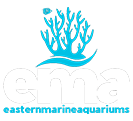Introduction to Acropora
Acropora coral is a type of coral that belongs to the phylum Cnidaria and is known for its intricate branching structures and vibrant colors. It is often considered the poster child for a thriving reef aquarium due to its beauty and importance in reef ecosystems. However, keeping Acropora coral in a reef tank can be a challenge due to its delicate nature and sensitivity to changes in water conditions. Acropora corals are reef builders, meaning they play a crucial role in the formation and growth of coral reefs.
Acropora corals are characterized by their thin, delicate branches and densely packed polyps. These corals come in a variety of vibrant colors, including shades of blue, purple, green, and pink. They are also known for their rapid growth rates, making them a popular choice among reef aquarium hobbyists.
Maintaining a healthy and thriving Acropora coral colony requires careful attention to water quality, lighting, and feeding. In this article, we will explore the key care tips for keeping Acropora corals in a reef tank.
Acropora Care Tips for a Reef Tank
To keep Acropora coral healthy in a reef tank, it is essential to maintain an appropriate balance and stability in the aquarium. One recommended practice is to use bare bottom tanks to prevent harm to Acropora colonies from sedimentation. This is because sediment accumulation can smother the delicate branches and polyps of Acropora corals, leading to stress and potential death.
Monitoring and maintaining various water parameters within appropriate ranges is also crucial for the well-being of Acropora corals. These parameters include pH, salinity, alkalinity, calcium, magnesium, temperature, potassium, iodine, iron, nitrate and phosphate. Acropora corals thrive in a stable environment, so it is important to regularly test and adjust these parameters as necessary.
In some cases, a calcium reactor may be necessary to ensure proper calcium levels for Acropora corals. Calcium is a vital element for the growth and skeletal development of corals, and maintaining adequate calcium levels is essential for the health and vitality of Acropora colonies.
Additionally, providing amino acids as a supplement can contribute to the nutrition and growth of Acropora colonies. Amino acids are essential building blocks for coral tissue and can help promote vibrant coloration and strong skeletal development. They can be provided through specialized coral foods or liquid supplements.
Incorporating live rock and a protein skimmer into the aquarium setup can also be beneficial for the overall health and stability of the tank. Live rock provides natural biological filtration and a habitat for beneficial microorganisms, while a protein skimmer helps remove organic waste and maintain water quality.
Lighting Requirements for Acropora Coral
Acropora corals require powerful lighting to enhance their colorful protective skin layer. LED lights, such as ReefLED or Radions are commonly used in reef tanks to provide bright and controllable lighting conditions for Acropora corals. LED lights are preferred due to their energy efficiency, long lifespan, and ability to provide a wide spectrum of light that can be tailored to the specific needs of Acropora corals.
The recommended lighting intensity for Acropora corals is around 300 PAR (Photosynthetically Active Radiation). This level of light allows the corals to photosynthesize and thrive. However, Acropora corals can tolerate higher intensities if acclimated properly. It is important to gradually increase the lighting intensity over time to avoid causing stress or bleaching in the corals.
In addition to intensity, the spectrum of light is also important for the growth and coloration of Acropora corals. A combination of blue and white light is commonly used to mimic the natural lighting conditions found in coral reefs. This combination provides the necessary wavelengths for photosynthesis while enhancing the vibrant colors of the corals.
Fragging Acropora Corals
Fragging, or fragmenting, Acropora corals is a process of propagating new colonies from existing ones. Fragging can be done by carefully cutting a small piece of the coral and attaching it to a frag plug or rock. This allows the fragment to grow and develop into a new colony.
When fragging Acropora corals, it is important to use proper techniques and tools to minimize stress and damage to the coral. Sterilizing all equipment and working in a clean environment helps reduce the risk of introducing pathogens or contaminants to the coral. It is also essential to provide the newly fragged Acropora piece with enough space to grow and spread without interfering with the flow of water in the tank. This ensures that the fragment receives adequate nutrients and water flow for its growth and survival.
Common Pests and Diseases of Acropora Coral
Acropora corals can be susceptible to various pests and diseases that can affect their health and survival. Some of the common pests include flatworms and red bugs, which can cause damage to the coral’s tissue. These pests can multiply rapidly and feed on the coral, leading to tissue loss and potential death if left untreated.
Regular monitoring and treatment of pest infestations are essential to maintain the health of Acropora corals. This can be done by visually inspecting the corals regularly and taking immediate action if any signs of pests or diseases are observed. Quarantining new corals before adding them to the main tank can also help prevent the introduction of pests or diseases.
In addition to pests, Acropora corals can be susceptible to diseases such as rapid tissue necrosis and slow tissue necrosis. These diseases can cause tissue loss and affect the overall health and appearance of the corals. Early detection and intervention are crucial for the successful treatment and recovery of affected corals.
Tips for Successful Acropora Care
Successfully keeping Acropora corals in a reef tank requires patience, understanding, and attention to detail. Acropora corals are delicate and sensitive, so it is important to provide them with a stable and suitable environment. This includes maintaining appropriate water parameters, providing proper lighting, and ensuring adequate nutrition.
Regular feeding with amino acids (such as Red Sea Reef Energy Plus AB+, Fauna Marin Amin, Coral Essentials Power Amino, Fauna Marin MinS, and the presence of fish can benefit the nutrition and growth of Acropora colonies. Amino acids provide essential building blocks for coral tissue, while small zooplankton serves as a natural food source for the corals. The presence of fish in the tank can also contribute to the overall health of Acropora colonies by providing natural nutrients through their waste.
Targeted feeding, along with the addition of calcium and trace elements, can contribute to the overall health, growth, and coloration of Acropora corals. Providing specific coral foods or liquid supplements can help meet the nutritional needs of the corals. Calcium and trace elements are essential for the growth and skeletal development of corals, and regular supplementation ensures that these requirements are met.
It is important to maintain stability in the aquarium environment and avoid sudden changes in water parameters to ensure the well-being of Acropora corals. Rapid changes in temperature, salinity, or other water parameters can cause stress and bleaching in the corals. Gradual adjustments and regular monitoring of water quality are key to maintaining a stable and suitable environment for the corals.
Conclusion
Proper care and maintenance are crucial for the successful keeping of Acropora corals in reef tanks. By maintaining appropriate water parameters, providing proper lighting, fragging with caution, and monitoring for pests and diseases, reef tank enthusiasts can successfully enjoy the beauty and benefits of Acropora corals in their aquariums.
To learn more about Acropora availability, visit EMA NZ at https://stg-emanz-431.uw2.rapydapps.cloud/.












